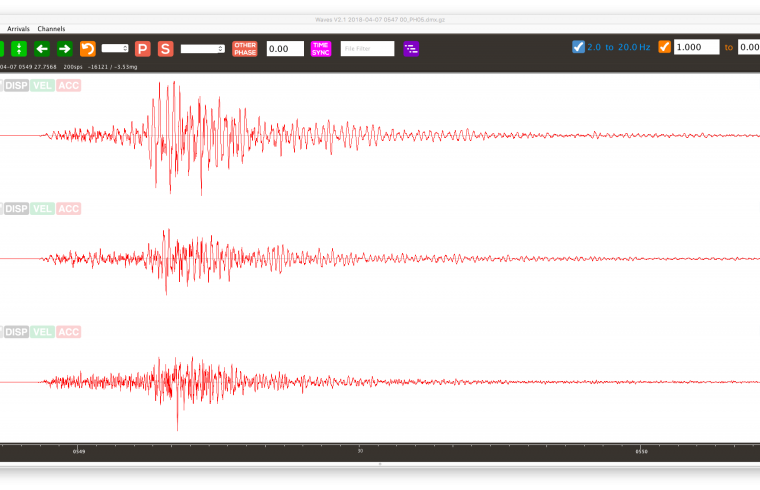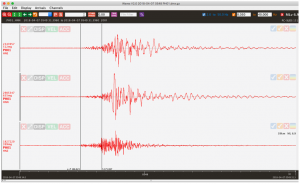Gary Gibson and Kevin McCue arrived in Moro late on Monday 23 April to check the aftershock monitoring equipment and download data from the recorders. It was deemed important to secure any data recorded following the large magnitude 6.3 earthquake on 7 April, shortly after they left PNG at the end of the installation field trip. On Friday morning they met with Oil Search Chief Geoscientist Dr Shane Schofield in Port Moresby to discuss the future of monitoring in the Southern Highlands and then the three visited the Port Moresby Geophysical Observatory where Chris McKee and Mathew Moihoi showed them around the observatory over a light lunch. These meetings were very productive. Kevin flew out at 3pm whilst Gary stayed on to analyse some of the data before leaving on Sunday 29 April.
The Australian Earthquake Engineering Society funded Kevin and Gary’s airfares to and from PNG whilst Oil Search again provided the essential logistical support in PNG including flights between Port Moresby and Moro, helicopter access to accelerograph sites and food and accommodation.
The equipment at all 6 sites was still intact and operational so we exchanged the data storage cards, delaying a look at the waveforms. The battery voltage at every site was less than 12 volts – the battery performance not up to expectations. Arrangements were hastily put in place to exchange flat batteries with recharged batteries that would last another 6 to 8 weeks until the removal of the temporary aftershock network. This necessitated more helicopter time.
Bad weather meant only the accelerograph at Suabi village got done so Gary instructed Yapi Akore, a self proclaimed bush mechanic, in the black art of changing batteries without damaging the sensitive recording equipment.
At camp meal times we met up with Mark Herriot from WGA Adelaide, and Dick Beetham from Coffey NZ who generously shared his office and we discussed the impact of the earthquake and aftershocks.
The data
A quick preview of the data revealed that a unique set of PNG earthquake strong motion records has been recovered from the network for the M6.3 event and hundreds of smaller aftershocks. A print of the record at the nearest station Tari is shown, the horizontal pga exceeding 0.63g, the vertical 0.4g, at a distance of 35 km from the focus. The strongest shaking, with a duration of a good 12 seconds, is in the surface waves that follow the P and S waves marked by the vertical thin black lines. The difference in the frequency content of the vertical and horizontal components is remarkable, the long period horizontal ground motion probably Love waves generated in near-surface crustal layers. They are virtually absent on the vertical component.
This data will be invaluable for investigating the source of the February mainshock, the depth of aftershocks and also in the forthcoming rewrite of the earthquake section of the PNG Building Code.
The villagers at Bosavi and Suabi looked after our recorders, and expressed appreciation for our work despite suffering greatly from the earthquakes and landslides which have destroyed life in the rivers and damaged homes and gardens. OSL’s Peter Ringo and Yapi Okore assisted us in the field in many ways. We discussed crustal structure with Pedro Restrepo in the OSL Sydney Office so we have a starting model for the aftershock locations.



